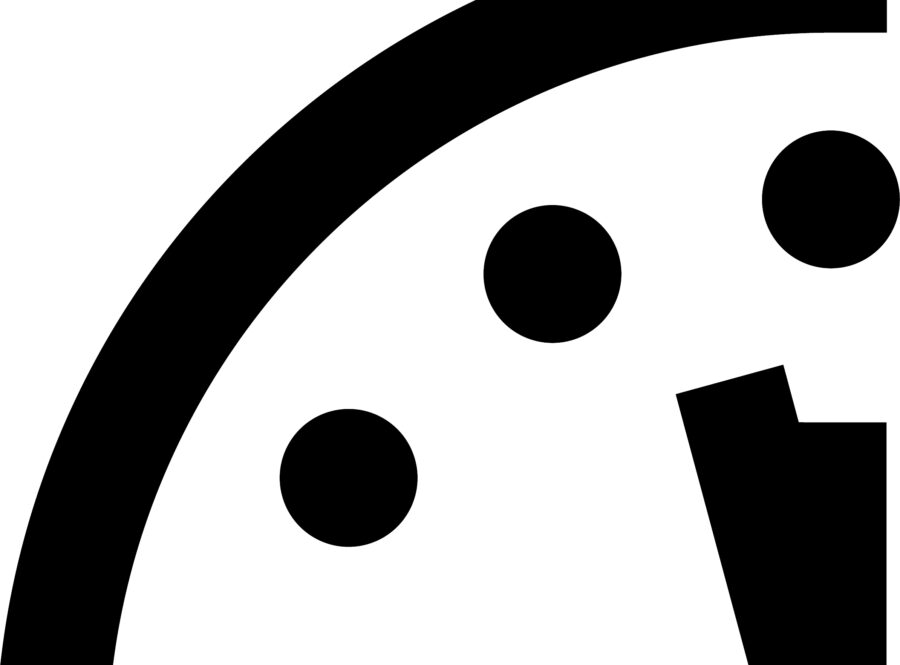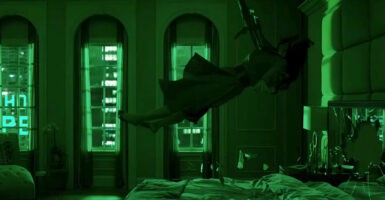The Doomsday Clock Just Updated And Is The Closest It’s Ever Been To Midnight, The End Is Near?
The Doomsday Clock just got another update for this year and it is the closest it's ever been to striking midnight. Is the end near?
This article is more than 2 years old

Think the end of the world is right around the corner? Well, you might not be the only one because the Doomsday Clock has been beating this end of days drum for some time now. And though the clock is meant to be something of a symbol for the state of our world, those behind it are, for sure, factoring in the pieces of our world that could contribute to humanity going kaput. And now, it looks like we are as close to midnight as ever because the Bulletin of the Atomic Scientists just made their most recent announcement.
On what is the 75th anniversary of the Doomsday Clock, the group in charge of “maintaining” it has held a conference to update the clock for in its annual announcement. Through a televised Zoom meeting (which was a huge downer), the group gave their reasoning behind the setting of the 2021 update (it’s retroactive to the past year). In a move that is somewhat surprising considering how many would think about the current state of the world, the group maintained its current setting at 100 seconds to midnight. That means it hasn’t moved backward or forward over the last year. But it’s still the closest we have ever been.
The Bulletin of Atomic Scientists, led by Dr. Rachel Bronson, made a live Doomsday Clock announcement on Thursday and they outlined some of their additional reasoning. The group’s website saw so much traffic during the announcement that it was down for a period of time. There were a lot of folks tuning in to see if this was the end of the world. You can see it below.
In addition to the ongoing heightened political tension, the group also mentioned biosecurity as an increased threat as well as disinformation campaigns making the “truth” more difficult to have consensus on these days. Plus increased issues around climate change are part of the rationale as well.
And of course, the increasing supply of nuclear arsenals from a number of different countries continues to be at the forefront of the Doomsday Clock and its current setting. Considering that it is where this whole thing started, it makes sense that the group would see this as the central piece of the thesis behind the Doomsday Clock setting.
The Doomsday Clock was created by the members of the Bulletin of Atomic Scientists all the way back in 1947. At the time the clock was used as a visual representation of the peril humans may have put themselves in with the creation and proliferation of nuclear weapons. The group originally set the Doomsday Clock to seven minutes to midnight. It was meant to show the fate of humanity, how the countdown aspect could represent large-scale changes or conflicts in the world. And while it originally started because of how humans might end up nuking each other to the Stone Age, over the years it’s brought in other factors to make determinations about the longevity of human existence. Crises along political, environmental, energy, climate, food and water supplies, and many other factors are considered when determining whether to move the clock forward or backward.

But really, the Doomsday Clock has done nothing but creep towards midnight over the last many decades. There have been a few times that the group has seen enough positivity in the world to tick the clock back some. The late-1980s and early-1990s saw this happen mostly around the United States and the Soviet Union, coming to a relative stalemate (quasi peace) in their relationship. But it’s been mostly bummer city since then.
The most recent update to the Doomsday Clock came back in 2020 before the start of the full-on global pandemic (though it was already underway). At the time, that event wasn’t cited but rather increased tensions between the United States and Russia as well as escalating turmoil in Iran. Climate change was also thrown in for good measure. Things haven’t changed all that much over the past year. But I guess the upside is it hasn’t gotten worse?












